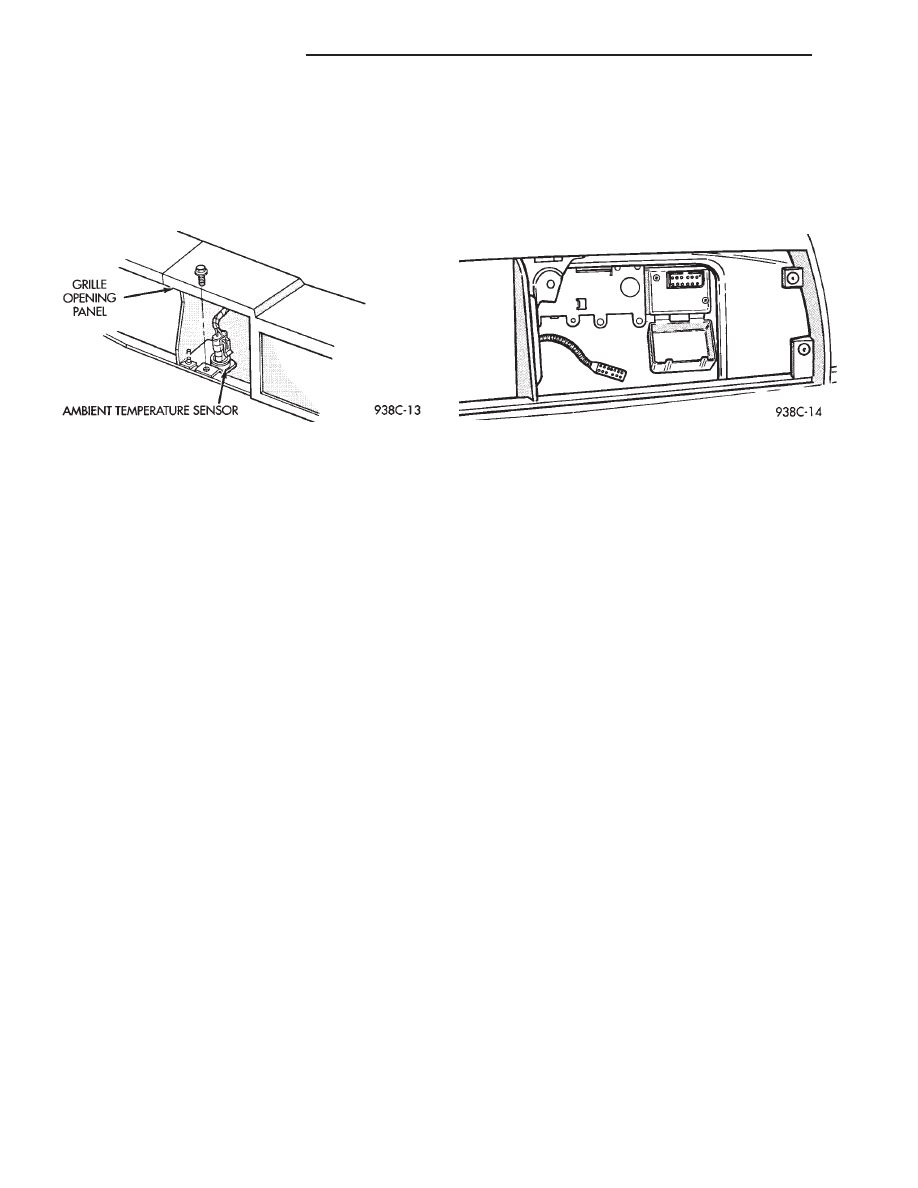Chrysler Le Baron, Dodge Dynasty, Plymouth Acclaim. Manual - part 281

AMBIENT TEMPERATURE SENSOR
(1) Remove screws attaching grille and remove
grille.
(2) Remove screw attaching sensor to radiator clo-
sure panel (Fig. 8).
(3) For installation, reverse above procedures.
ENGINE COMPARTMENT NODE REMOVAL
(1) Remove screws attaching grille and remove
grille.
(2) Disconnect wire harness connector.
(3) Remove screw attaching engine compartment
node to the closure panel (Fig. 9).
(4) For installation, reverse above procedures.
Fig. 8 Ambient Temperature Sensor
Fig. 9 Engine Compartment Node
8C - 12
OVERHEAD CONSOLE
Ä